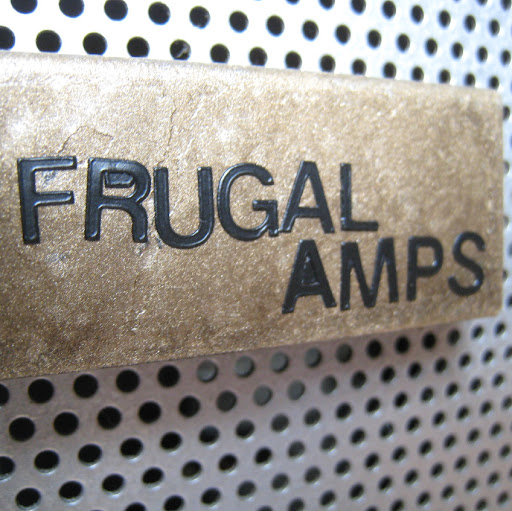Mark W Moser
age ~69
from Wooster, OH
- Also known as:
-
- Mark K Moser
- Mark S Moser
- Mirelys Plata
- Phone and address:
- 451 S Smyser Rd, Wooster, OH 44691
Mark Moser Phones & Addresses
- 451 S Smyser Rd, Wooster, OH 44691
- 2179 E Hutton Rd, Wooster, OH 44691
- Shreve, OH
- 3686 E Pleasant Home Rd, Creston, OH 44217 • 330 435-8112
- Aurora, IL
- Des Plaines, IL
- Englewood, FL
- Lakeville, OH
Work
-
Company:Paramount health care, promedica health system - Toledo, OH1994
-
Position:Vice president marketing
Education
-
School / High School:THE GEORGE WASHINGTON UNIVERSITY- Washington, DC1975
License Records
Mark W Moser
License #:
E024235 - Expired
Category:
Emergency medical services
Issued Date:
Jan 7, 2009
Expiration Date:
Jun 30, 2011
Type:
Los Angeles County FD
Mark Montgomery Moser
License #:
4833 - Active
Category:
Water Operator
Issued Date:
Jan 19, 2017
Effective Date:
Jan 19, 2017
Expiration Date:
Dec 31, 2017
Type:
Grade IV Water Operator
Mark W Moser
Address:
451 S Smyser Rd, Wooster, OH 44691
License #:
A2400961
Category:
Airmen
Us Patents
-
Hydrocarbon Conversion Catalyst And Process Of Using Thereof
view source -
US Patent:6514904, Feb 4, 2003
-
Filed:May 22, 2002
-
Appl. No.:10/154059
-
Inventors:Mark D. Moser - Elk Grove Village IL
Robin E. Shepherd - Haughton LA
Andrzej Z. Ringwelski - Marengo IL
John Y. G. Park - Naperville IL -
Assignee:UOP LLC - Des Plaines IL
-
International Classification:B01J 2300
-
US Classification:502323, 502322, 502327, 502328, 502329, 502330, 502332, 502333, 502334, 502335, 502336, 502337, 502338, 502339, 502341, 502342, 502351, 502355, 502415, 502439, 208136, 208137, 208138, 208139
-
Abstract:A catalyst and a process for using the catalyst are disclosed generally for the conversion of hydrocarbons. By the use of at least one high temperature calcination under dry conditions, a catalyst with a beneficial combination of lowered surface area and excellent piece crush is created. X-ray diffraction pattern information is used to distinguish the resulting product.
-
Multi-Catalyst Selection For Chlorided Reforming Catalyst
view source -
US Patent:7410565, Aug 12, 2008
-
Filed:Dec 17, 2004
-
Appl. No.:11/015156
-
Inventors:Mark P. Lapinski - Aurora IL, US
Leon Yuan - Lake Forest IL, US
Mark D. Moser - Elk Grove Village IL, US -
Assignee:UOP LLC - Des Plaines IL
-
International Classification:C10G 35/04
-
US Classification:208 63
-
Abstract:The chloride retention of an alumina catalyst over the course of operation and regeneration can be controlled and stabilized by incorporating a small amount of a component selected from the group including phosphorus, boron, titanium, silicon, and zirconium. Steam treatments have been used to simulate commercial hydrothermal stability and a small amount of the stabilizer component has been discovered which balances chloride retention. Moreover, in a multi-catalyst hydrocarbon conversion process, such as the two-step reforming of naphtha, it has been discovered that proper selection of a catalyst having lower chloride retention in combination with another catalyst having higher chloride retention results in a process with increased yield and/or higher octane gasoline.
-
Adsorbing Polynuclear Aromatics From A Reforming Process Using Adsorbents Containing Iron
view source -
US Patent:8262901, Sep 11, 2012
-
Filed:Feb 5, 2010
-
Appl. No.:12/701187
-
Inventors:Manuela Serban - Glenview IL, US
Mark P. Lapinski - Aurora IL, US
Mark D. Moser - Elk Grove Village IL, US -
Assignee:UOP LLC - Des Plaines IL
-
International Classification:C10G 67/06
C07C 7/12 -
US Classification:208 99, 208310 R, 585820
-
Abstract:An exemplary embodiment can be a process for removing one or more polynuclear aromatics from at least one reformate stream from a reforming zone. The PNAs may be removed using an adsorption zone. The adsorption zone can include first and second vessels each vessel containing an activated carbon adsorbent. Generally, the process includes passing the at least a portion of an effluent of the reforming zone through the first vessel containing a first activated carbon adsorbent wherein the first activated carbon adsorbent comprises iron.
-
Adsorbing Polynuclear Aromatics From A Reforming Process At Reaction Temperatures
view source -
US Patent:8518240, Aug 27, 2013
-
Filed:Feb 5, 2010
-
Appl. No.:12/701264
-
Inventors:Manuela Serban - Glenview IL, US
Mark P. Lapinski - Aurora IL, US
Mark D. Moser - Elk Grove Village IL, US -
Assignee:UOP LLC - Des Plaines IL
-
International Classification:C10G 35/04
C10G 25/00
C10G 25/12
C10G 7/12 -
US Classification:208 64, 208303, 208305, 208307, 208310 R
-
Abstract:One exemplary embodiment can be a process for removing one or more polynuclear aromatics from at least one reformate stream from a reforming zone. The PNAs may be removed using an adsorption zone. The adsorption zone can include first and second vessels. Generally, the process includes passing the at least a portion of an effluent of the reforming zone through the first vessel containing a first activated carbon. The adsorption zone is operated at a temperature of at least 370 C.
-
Process For Increasing Aromatics Production
view source -
US Patent:8604262, Dec 10, 2013
-
Filed:Mar 9, 2012
-
Appl. No.:13/417200
-
Inventors:David A. Wegerer - Lisle IL, US
Kurt M. Vanden Bussche - Lake in the Hills IL, US
Mark D. Moser - Elk Grove Village IL, US -
Assignee:UOP LLC - Des Plaines IL
-
International Classification:C07C 1/00
C07C 2/00
C07C 4/00
C07C 5/00
C07C 6/00 -
US Classification:585302, 585301, 585419, 585407, 585413, 585418, 208 80, 208 85, 208 92, 208 96, 208133, 208134, 208138, 208140, 208141
-
Abstract:A process for reforming a hydrocarbon stream is presented. The process involves splitting a naphtha feedstream to at least two feedstreams and passing each feedstream to separation reformers. The reformers are operated under different conditions to utilize the differences in the reaction properties of the different hydrocarbon components. The process utilizes a common catalyst, and common downstream processes for recovering the desired aromatic compounds generated.
-
Reforming Process Using High Density Catalyst
view source -
US Patent:20060102520, May 18, 2006
-
Filed:Nov 12, 2004
-
Appl. No.:10/986585
-
Inventors:Mark Lapinski - Aurora IL, US
Mark Moser - Elk Grove Village IL, US
Veronica Godfrey - Chicago IL, US
Michelle Cohn - Glenview IL, US -
International Classification:C10G 35/09
C07C 5/333 -
US Classification:208138000, 585660000, 502325000
-
Abstract:A catalyst and a process for using the catalyst are disclosed generally for the conversion of hydrocarbons. The catalyst has an increased average bulk density and a decreased mass ratio of platinum-group metal. The process using the catalyst obtains unexpected high activity and stability for the reforming of naphtha range hydrocarbons. Mössbauer spectroscopy is used to characterize the extent of tin association with platinum and determine an effective molar tin ratio appropriate for alumina supports with densities above 0.6 g/cc.
-
Dilute Phosphorus Incorporation Into A Naphtha Reforming Catalyst
view source -
US Patent:20070215523, Sep 20, 2007
-
Filed:Dec 10, 2002
-
Appl. No.:10/316224
-
Inventors:Mark Moser - Des Plaines IL, US
Michael Quick - Des Plaines IL, US
Margo Steward - Des Plaines IL, US -
International Classification:C10G 35/00
C10G 35/06
B01J 23/42
B01J 27/13
B01J 27/185
B01J 27/00 -
US Classification:208133000, 208137000, 208138000, 208139000, 502208000, 502213000, 502230000, 502334000
-
Abstract:In order to maintain the surface area of an alumina catalyst over the course of operation and regeneration, a method of incorporating phosphorus into the alumina has been developed. By incorporating a small amount of phosphorus, the resulting catalyst is better able to withstand hydrothermal conditions, such as during a carbon burn step, which causes alumina surface area to degrade or decrease. Reduced surface area also desorbs chloride from the catalyst, lowering activity and increasing corrosion. Here, steam treatments have been used to simulate commercial hydrothermal stability and a critically small amount of phosphorus has been discovered which balances an increased surface area against decreased chloride retention. Increased surface area results from increased phosphorus, yet higher levels of phosphorus blocks ability to hold chloride. Moreover, X-ray data shows that an amount as low as 0.2 wt-% phosphorus increases alumina transition temperature, while pilot plant data shows excellent naphtha reforming yields.
-
High Temperature Platformer
view source -
US Patent:20120275974, Nov 1, 2012
-
Filed:Apr 5, 2012
-
Appl. No.:13/440527
-
Inventors:Mark D. Moser - Elk Grove Village IL, US
Clayton C. Sadler - Arlington Heights IL, US
Mark P. Lapinski - Aurora IL, US
Kurt M. VandenBussche - Lake in the Hills IL, US -
Assignee:UOP LLC - Des Plaines IL
-
International Classification:B01J 19/00
-
US Classification:422600
-
Abstract:An apparatus for reforming a hydrocarbon stream is presented. The apparatus involves changing the design of reformers and associated equipment to allow for increasing the processing temperatures in the reformers and heaters. The reformers are operated under different conditions to utilize advantages in the equilibriums, but require modifications to prevent increasing thermal cracking and to prevent increases in coking.
Name / Title
Company / Classification
Phones & Addresses
2179 E Hutton Rd, Wooster, OH 44691
MOSER CONCRETE CONSTRUCTION, INCORPORATED
Wooster, OH
MARK H. MOSER CONSULTING, LLC
MARK ANTHONY ENTERPRISES, LLC
PARAMOUNT INSURANCE COMPANY
THE MOSER GROUP, LLC
MOSER'S TECHNICAL SERVICES, LLC
WAYLAND PROPERTIES, LLC
Resumes

Mark Moser
view source
Mark Moser
view source
Mark Moser
view source
Mark Moser
view source
Mark Moser
view source
Mark Moser
view source
Mark Moser
view source
Mark Moser
view sourcePlaxo

Mark Moser
view source
Mark Moser
view sourceMWHH
Myspace
Classmates

Mark Moser
view sourceSchools:
Plymouth Whitemarsh High School Plymouth Meeting PA 1976-1980
Community:
Cecelia Carotenuto

Mark Moser
view sourceSchools:
St. James School Arlington Heights IL 1969-1973
Community:
Todd Harris, Anthony Russo, Lisa Jarolin, Karie Kordick

Mark Moser
view sourceSchools:
Mt. Airy High School Mt. Airy MD 1977-1995
Community:
Sue Creswell, Dennis Griffith, Karen Fisher, Ann Zavetz

Mark Moser
view sourceSchools:
Madisonville High School Madisonville TN 1985-1989
Community:
Sheila Chambers, Danny Mason, Shannon Byrum, Sandy Hudson

Mark Moser
view sourceSchools:
Huntington Beach High School Huntington Beach CA 1973-1977
Community:
Benny Esparza, Devona Wallace, Gloria Ave

Mark Moser
view sourceSchools:
Colton High School Colton WA 1958-1962
Community:
Christi Lemon, Bernadette Druffel, Chris Rose, Wilma Schmidt

Mark Moser
view sourceSchools:
Colton High School Colton WA 1958-1962
Community:
Christi Lemon, Bernadette Druffel, Chris Rose, Wilma Schmidt
Googleplus

Mark Moser

Mark Moser

Mark Moser

Mark Moser

Mark Moser

Mark Moser

Mark Moser

Mark Moser

Mark Andrey Moser
view source
Mark F. Moser
view source
Mark Moser
view source
Mark Moser
view source
Mark Moser
view source
Mark Moser
view source
Mark Moser
view source
Mark Moser
view sourceYoutube
Flickr
Get Report for Mark W Moser from Wooster, OH, age ~69
















